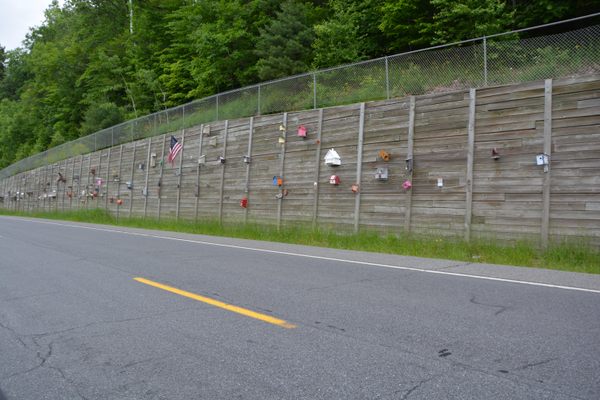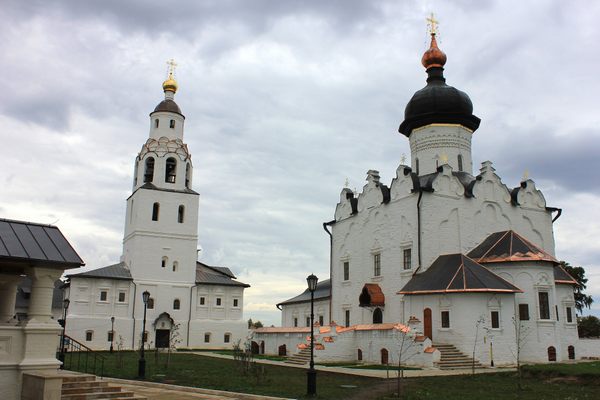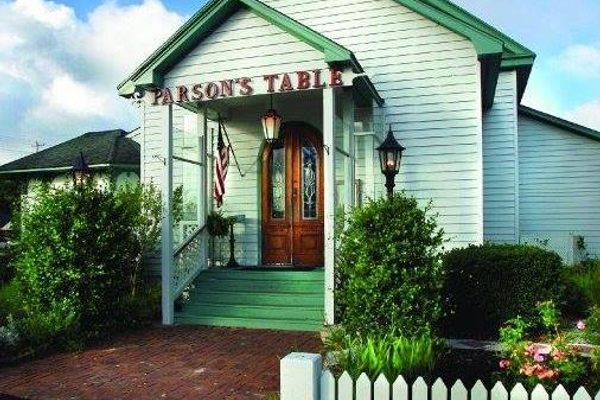AO Edited
South Solon Meeting House
Floor-to-ceiling frescoes by local art students cover the interior of a nearly 200-year-old church.
This white Gothic Revival structure at a rural crossroads overlooking gently sloping farmland is about as pastoral as New England gets. Located in Maine’s Kennebec Valley, the South Solon Meeting House has stood since 1842 as both a place of worship and a community gathering point. Its quaint, sturdy construction is evident in passing, though its other great distinguishing characteristic is only visible from the inside: Wall-to-wall, floor-to-ceiling frescoes completed by artists associated with a local art school in the 1950s cover just about every inch inside this nearly two-century-old church.
When the building first went up, its founders stipulated that it be “opened freely on weekdays, when requested, for conference meetings, lectures, and addresses on all religious, benevolent, moral, and scientific subjects.” Its severe, restrained style (designed by a man named John Doe, no less) reflected not only a puritanical religiosity but also, likely, a tight budget. For about a century, it served as a combination of church and town hall, sliding gradually into disuse and disrepair during that time. While the building was partially restored in 1939, local interest in it waned until a student at the nearby Skowhegan School of Painting and Sculpture sensed an opportunity.
Inspired by European frescoes, the school’s founders made Skowhegan one of the only American institutions at the time teaching the ancient style. The process involves grinding dry pigment into distilled water and applying it to wet plaster such that it essentially becomes the wall instead of resting atop it—Michaelangelo’s ceiling of the Sistine Chapel being the most famous example. In 1951, the school held the first of several national calls for fellowships that would turn fledgling fresco artists loose on the walls of the South Solon Meeting House. Thirteen artists were selected over several years, their only guidance being to “bear in mind the religious character of the building.”
Rendered in warm, explosive hues, scenes from the life of Moses float above the pulpit (the 1842 original, to boot); a burning bush rages between the sacrifice of Isaac and the likeness of Job on the building’s north wall; Christ preaches from a boat to a hillside of listeners on the east wall; a reimagining of the Last Supper adorns the south wall; and perhaps most strikingly, a colossal face of Christ looks down from the ceiling onto the box pews (also 1842 originals) in a fresco dubbed “Godhead.” Seemingly no flat surface within the building was spared from fresco, the volume of work creating a sort of amniotic envelopment. Moving from outside to inside the building, one is struck by the juxtaposition of the exterior’s stark, symmetrical design and the flamboyant frescoes within. “Maine has more than a few overlooked art treasures,” wrote one art critic in the Portland Press Herald, “but the South Solon Meeting House might be the greatest of them all.”
When finished, the frescoes restored regional interest in the building, spurring the incorporation of the South Solon Historical Society, who preserve the building and manage events held therein.
Know Before You Go
The meeting house is unlocked and open to visitation 24/7, but keep in mind there is no electricity.
Plan Your Trip
The Atlas Obscura Podcast is Back!
















Follow us on Twitter to get the latest on the world's hidden wonders.
Like us on Facebook to get the latest on the world's hidden wonders.
Follow us on Twitter Like us on Facebook